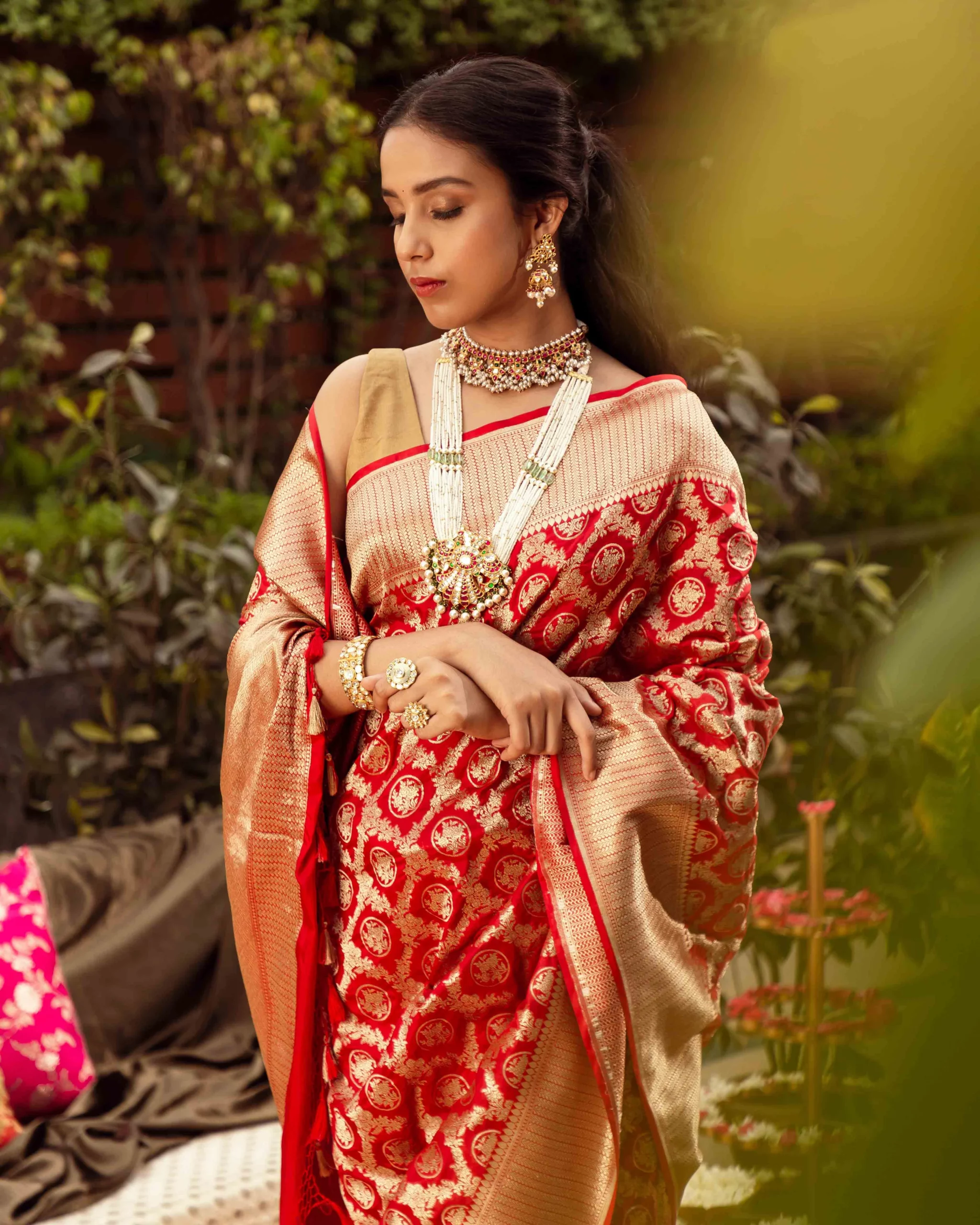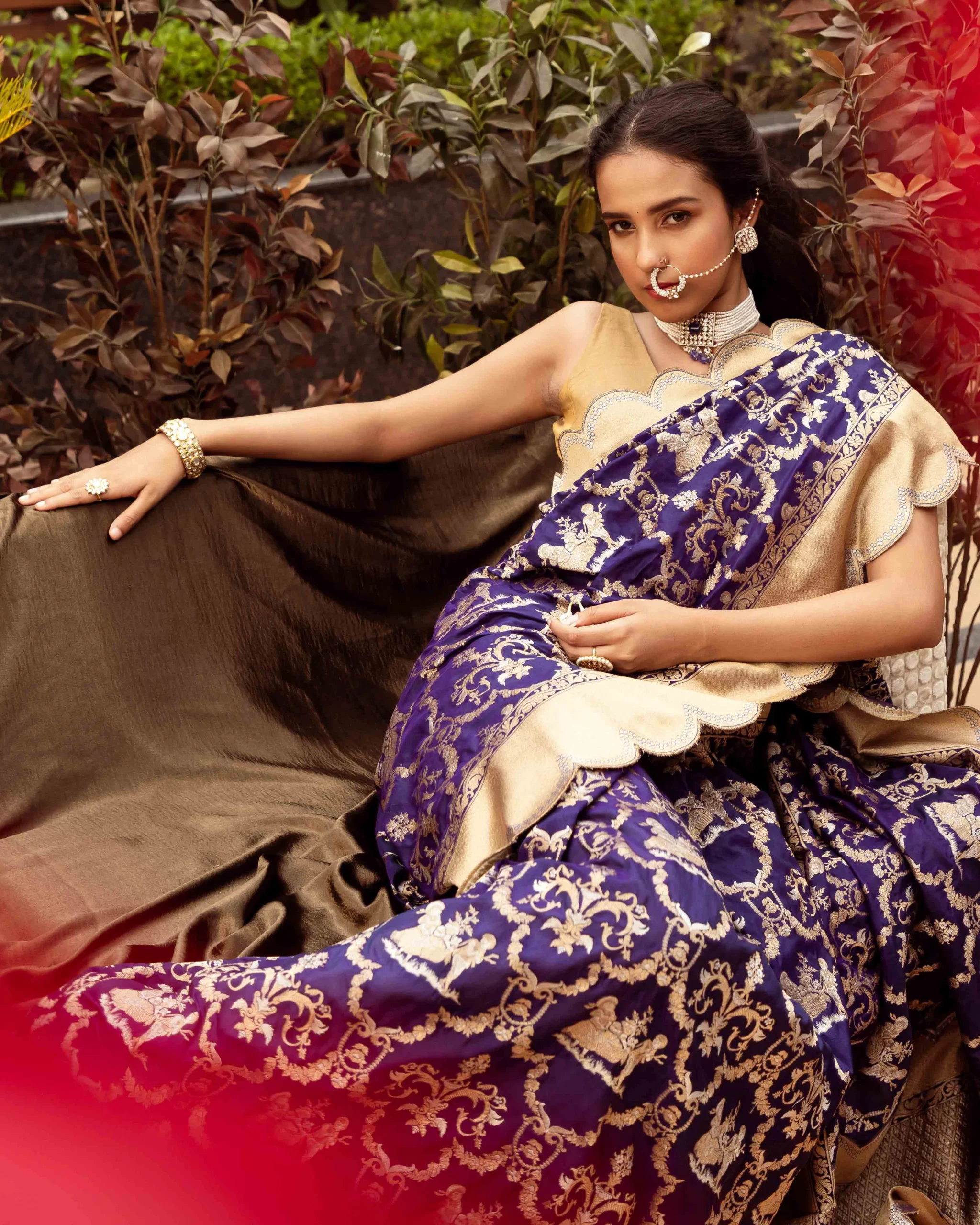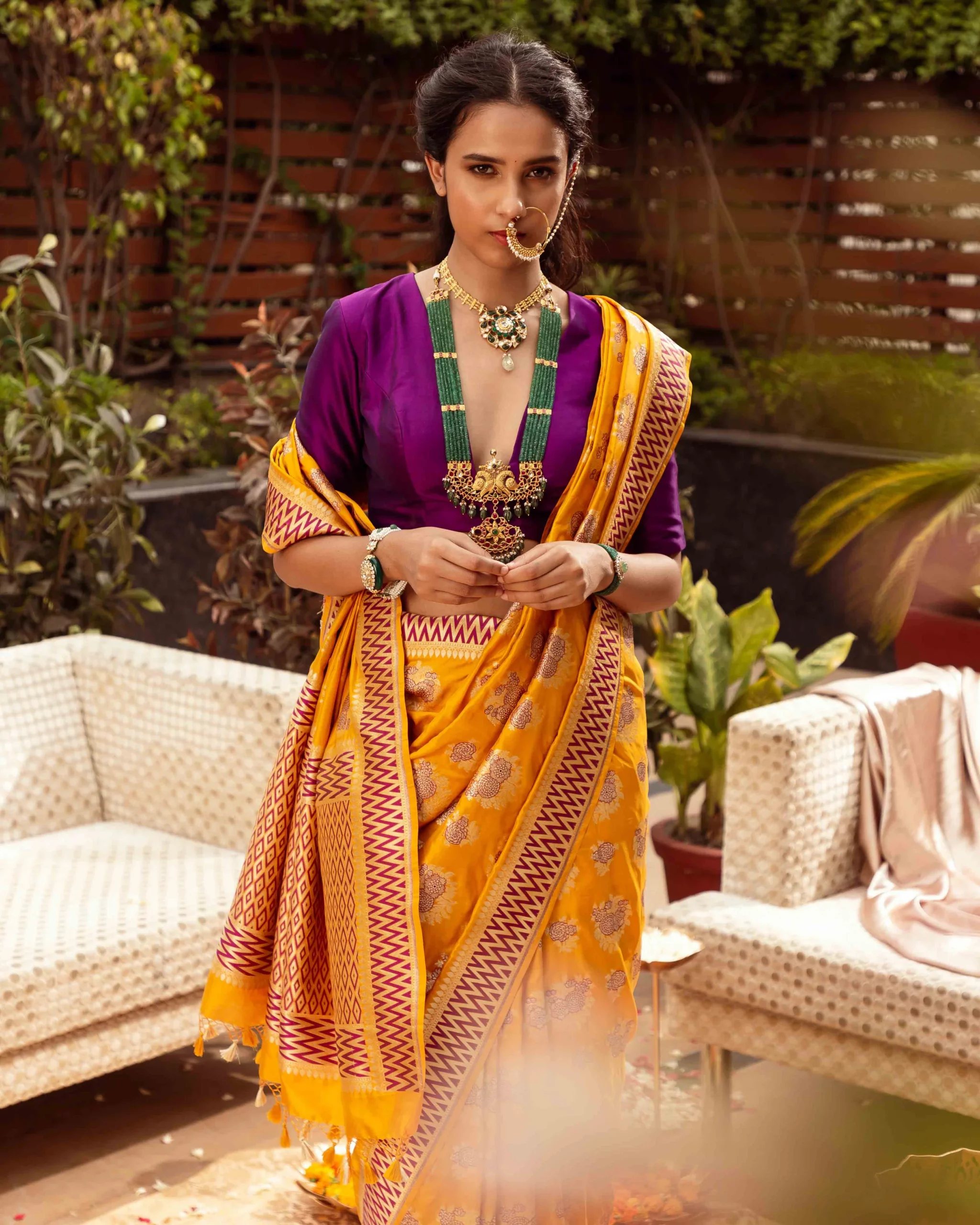With their rich history and cultural significance, Banarasi or Varanasi silk sarees have held a revered place in the wardrobes of Indian women for centuries. These sarees, known for their intricate weaving and rich heritage, have captured the hearts of generations, transcending time and trends. Each Banarasi silk saree tells a story, reflecting the skill, creativity, and cultural heritage of the artisans who weave them.
In this blog, you can explore the allure and significance of these sarees that have left an indelible mark in the world of fashion.
A Tapestry of Weaving Techniques and Designs
These sarees are the epitome of fine craftsmanship, blending Persian and Indian weaving techniques passed down through generations. The weaving process involves handloom weaving, where artisans meticulously create intricate patterns using gold or silver threads, known as zari, along with silk. The resulting designs are breathtakingly intricate and diverse, ranging from floral motifs to architectural patterns and mythological scenes.

One of the most renowned weaving techniques used in these sarees is the ‘Brocade’ technique. It involves intertwining silk and metallic threads to create an embossed effect, giving the saree an aura of regal grandeur. The ‘Jangla’ technique, on the other hand, involves weaving small, intricately designed motifs throughout the fabric. Additionally, the ‘Tanchoi’ technique is known for its distinctive, colourful patterns, achieved by using a single weft thread.
A Kaleidoscope of Colors and Embellishments
These sarees boast an extensive colour palette, ranging from vibrant hues to soft pastels. These colours are carefully chosen to complement the intricate designs and reflect the wearer’s personality and occasion. The sarees often feature contrasting borders and pallus, adorned with elaborate motifs and intricate thread work.

Furthermore, these sarees are known for their opulent embellishments. The zari work, with its lustrous gold or silver threads, adds a touch of luxury and grandeur. The use of precious and semi-precious stones, such as pearls, rubies, and emeralds, further enhances the beauty of these sarees, making them fit for weddings, festive celebrations, and other special occasions.
A Legacy of Tradition and Heritage
Banarasi silks are not merely pieces of clothing; they are a testament to India’s rich cultural heritage. These sarees have been an integral part of Indian weddings and festivities for centuries, representing grace, tradition, and family legacy. Many families pass down these sarees as heirlooms from one generation to another, symbolising the timeless bond between tradition and modernity.

The weaving of these sarees is deeply rooted in the cultural fabric of Varanasi. The artisans, often belonging to families with a long history of weaving, dedicate their lives to this intricate art form. Their skills are honed over years of practice, and their expertise is reflected in every thread of the saree.
In recent times, the convenience of purchasing a Banarasi silk saree online has led to an increase in its popularity. However, discerning customers must acquaint themselves with its distinguishing characteristics, like the weave’s precision, the design’s intricacy, and the silk’s excellence, to ensure they purchase an authentic product.
Conclusion:
A Banarasi silk saree is a testament to India’s vibrant culture and centuries-old textile traditions. They are a timeless embodiment of quintessential Indian grace, making them an indispensable element of every Indian woman’s wardrobe. As you continue to celebrate and cherish these beautiful works of art, this silk saree’s legacy continues to grow, bridging the gap between your rich past and your vibrant present.




